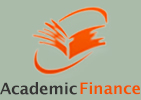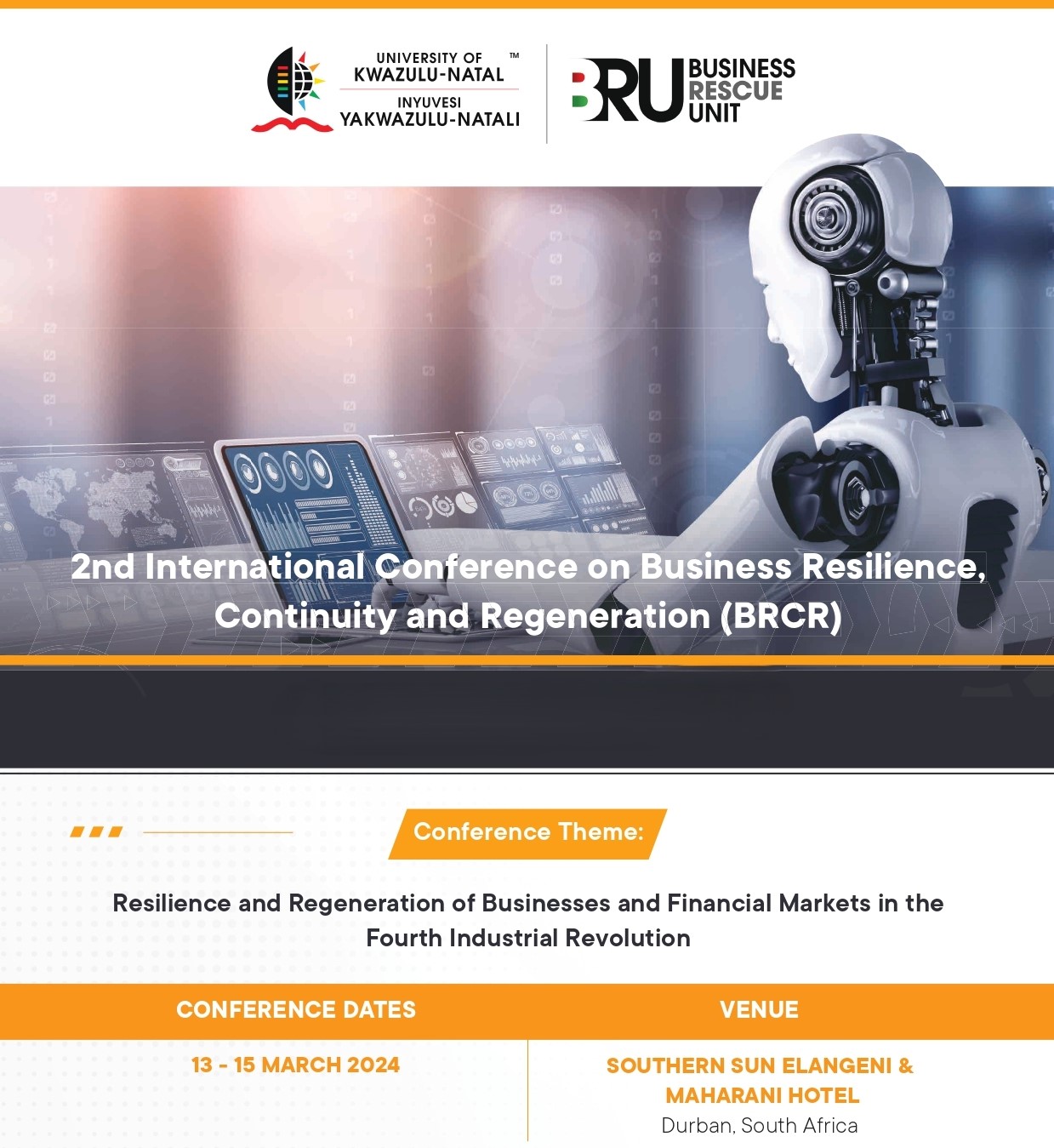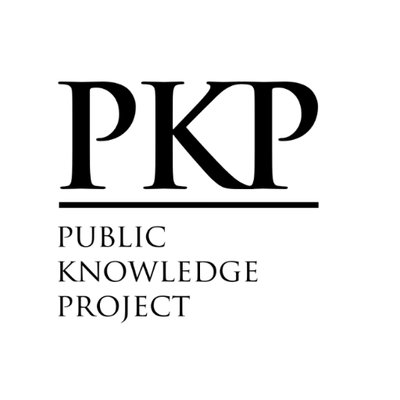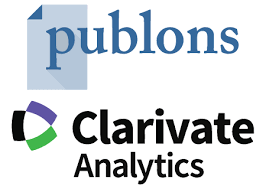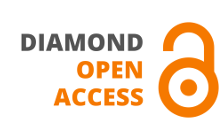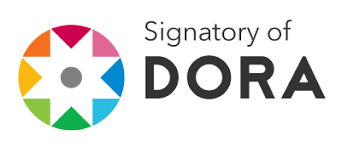Lien entre développement financier et croissance
un lien de causalité dynamique
Mots-clés :
Keywords: financial development, interest rate liberalisation, economic growth, data, bounds test, autoregressive distributed lag, South Africa.Résumé
Objectif : Cette étude a examiné la relation entre le développement financier et la croissance économique en Afrique du Sud à l'aide des données de séries chronologiques annuelles (1980 à 2022) de la Banque de réserve sud-africaine et de Quantec Easy Data.
Méthode : L’étude a utilisé à la fois le décalage distribué autorégressif cointégré (ARDL) et l’approche de causalité Granger pour les analyses.
Résultats : Les résultats des tests unitaires ont révélé que les variables étaient stationnaires et non stationnaires au niveau, impliquant un mélange de I(0) et I(1), d'où l'approche ARDL. L'analyse de cointégration a révélé que les variables sont cointégrées, ce qui signifie qu'il existe entre elles une relation d'équilibre à long terme. En outre, les résultats du test de causalité de Granger ont révélé que la causalité va du PIB à la libéralisation des taux d’intérêt ou vice versa.
Originalité/pertinence : Cette étude a adopté un angle différent en divisant le développement financier en quatre indicateurs et en utilisant la libéralisation des taux d'intérêt comme variable supplémentaire dans le système.
Téléchargements
Références
Asterious, D., & Hall, S. (2007), Applied Econometrics: A Modern Approach using Eviews and Microfit Revised Edition, New York: Palgrave Macmillan.
Ayoo, C. (2022), Poverty reduction strategies in developing countries, DOI: 10.5772/IntechoOpen.101472.
Azmeh, C. 2021, "The effect of financial development on economic growth in developing countries", development studies research, vol. 9(1), pp. 1-14, http://dx.doi.org./10.2139/SSRN-id3899159
Balogun, W., Dahanan, J., & Hassan, S. (2016). Long run impacts of Interest Rate Liberalization on Stock Market Development, Social and Behavioral Science, DOI: 10.1016/j.sbspro.2016.04.053, vol. 219(3), pp. 126-133.
Boubellouta, B. (2015), Interest Rate Liberalization: Motivation and Requirements, Politics Economics, DOI:10.54245/2210-000-006-003, vol. 29(1), pp. 35-62.
Brooks, C. (2008), Introductory Econometrics for Finance. New York: United States of America by Cambridge University Press.
Bwire, T., & Musiime, A. (2012), Financial Development - Economic Growth Nexus - Empirical Evidence From Uganda, Department of Statistic Method, vol. 6(3), pp. 1-18.
Ductor, L., & Grechyn, D. (2015), Financial development, real sector, and economic growth, International Review of Economics and Finance, vol. 12(4), pp. 393-405.
Ewetan, O., Ike, D., & Urhie, E. (2015), Financial Sector Development and Domestic Savings in Nigeria: A Bounds Testing Co-Integration Approach, International Journal of Research in Humanities and Social Studies, ISSN 2394-6288 Print & ISSN 2394-6296 0nline, vol. 2(2), pp. 37-44.
Gondo, J. (2009), Financial Development and Economic Growth: Evidence from South Africa: 1970-1999, Journal of Finance and Economics, pp. 1-26.
Hongli, S., & Hao, J. (2012), The relationship between economic growth and financial development. School of Management, Hebei University of Technology, vol. 136, pp. 103-110.
IMF, (2023), 2023 article IV consultation - press release; staff report; and statement by the executive director for South Africa, Washington: International Monetary Fund.
Kripfganz, S., & Schneider, D. (2018), ARDL: Estimating autoregressive distributed lag and equilibrium correction models. Proceedings of the 2018 London Stata Conference 2018 09 (pp. 1-44).
Kwakwa, A., Dankwah, J., Boahen, A., & Hammond, P. (2023), Financial development in South Africa: The role of natural resources, IT infrastructure, and government size. General and Applied Economics, DOI: 10.1080/23322039.2023.2281844, vol. 11(2), 2281844, , pp.1-16.
Levine, R, (2021), Finance, growth and inequality, IMF working paper, ISBN/ISSN: 9781513583365/1018-5941, pp. 1-80.
Machado, C., Saraiva, A., & Vieira, P. (2021), Finance-growth nexus in sub-Saharan, South African Journal of Economics and Management Sciences, vol. 24(1), https://doi.org/10.4102/sajems.v24i1.3435, pp. 2222-3435.
Morgan, J. (2015), China: The Path to Interest Rate Liberalisation, Global Liquidity, vol. 1, pp. 1-23.
Muhammad, A., Muhammad, H., Aznita, B., & Jimoh, O. (2016), Stock Market Development and Economic Growth: Evidence from Asia, International Journal of Economic and Financial Issues, vol. 6(3), pp. 1200-1208.
Ncanywa, T., & Mabusela, K. (2019), Can Financial Development Influence Economic Growth: The Sub-Saharan Analysis?, Journal of Economics and Financial Science, vol. 12(1), https://doi.org/10.4102/jef.v12i1.194, pp. a194
Nor, N. (2015), Financial Development and Economic Growth: A Survey Of Literature, Proceeding of 2nd International Conference on Management, pp. 447-456.
Nwaonuma, N., & Udude, N. (2017), Estimating The Causal Relationship Between Financial Development and Economic Growth in Nigeria, Journal of Economics and Finance, e-ISSN: 2321-5933, p-ISSN: 2321-5925, vol. 8(3), pp. 47-55.
Nyamutowa, A., Mutonhori, C., & Le Roux, P. (2019), Financial sector development and economic growth in the Southern African Development Community region, Journal of Economics and Financial Sciences, vol. 12(1), pp. a464, http://doi.org/10.4102/jef.v12i1.464.
Onwumere, J., Okore, A., & Ibe, I. (2012), The impact of interest rate liberalization on savings and investment: Evidence from Nigeria. Research Journal of Finance and Accounting, ISSN 2222-1697 paper ISSN 2222-2847, vol. 3(10), , pp. 130-136.
Rashti, N., Aragh, E., & Shayeste, M. (2014), Relationship Between Financial Development and Economic growth, evidence from Financial Crisis, Asian Economic and Financial Review, vol. 4(7), pp. 930-940.
Richard, A., & Werner, P. (2012), The Quantity Theory of Credit and Some of its Applications. Centre for banking, finance and sustainable development, pp. 1-89.
Shah, W., Wang, B., & Yasmeen, R. (2023). Evaluating the role of banking efficiency, institutions and financial development for sustainable development: implications for Belt and Road Initiative (BRI), PLos ONE 18(10), e0290780. httpa://doi.org/10.1371/journal.pone.2090780.
Sohag, K., Nabilah, A., & Begum, R. (2015), Dynamic impact of financial development on economic growth: heterogeneous panel data analysis of island economies, Int. J. Economic Policy in Emerging Economies, DOI: 10.1504/IJEPEE.2015.068249, vol. 8(1), pp. 77-95.
Stock, J., & Watson, M. (2015). Introduction to Econometrics, Updated Third Edition, Saffron House, 6-10 Kirby, London EC1N 8Ts.: Pearson Education.
Tajudeen, E., Taofeek, O., & AbdulGaniy, A. (2017), Interest rate liberalisation, financial development and economic growth in Sub-Saharan African economies, African Journal of Economic Review, vol. 5(2), pp. 109-129.
Wang, Y., Li, X., Abdou, H., & Ntim, C. (2015)., Financial development and Economic growth in China, Investment management and financial innovations, vol. 12(3), pp. 8-18.
Wen, J, Mahmood, H, Khalid, S & Zakaria, (2022). The impact of financial development on economic indicators: a dynamic panel data analysis, Economic Research-Ekonomska Istraživanja, Taylor & Francis Journals, vol. 35(1), pp. 2930-2942, https://doi.org/10.1080/1331677X.2021.1985570
Yongfu, H. (2010), Determinants of financial development. New York: Palgrave, DOI:10.1057/9780230302494
Yusof, Z. (2013). A Startling New Empirical Finding on the Nexus Between Financial Development and Economic Growth in Kenya, Handbook on the Economic, Finance and Management Outlooks, ISBN: 978-969-9347-14-6, vol. 28(12), pp. 805-820.
Zhengu, L., Pengfei, W., & Zhewei, X. (2020), Interest rate liberalizatin and Capital Misallocation, Federal Reserve Bank of San Francisco Working paper series 2017-15, pp. 1-46, http://doi.org/10.24148/wp2017-15
Téléchargements
Publié-e
Comment citer
Numéro
Rubrique
Licence
(c) Tous droits réservés Phumla Mahlangu 2025

Cette œuvre est sous licence Creative Commons Attribution - Pas d'Utilisation Commerciale - Pas de Modification 4.0 International.
Les auteurs qui publient dans cette revue acceptent les termes suivants :
- Les auteurs conservent le droit d'auteur et accordent à la revue le droit de première publication, l'ouvrage étant alors disponible simultanément, sous la licence Licence d’attribution Creative Commons permettant à d'autres de partager l'ouvrage tout en en reconnaissant la paternité et la publication initiale dans cette revue.
- Les auteurs peuvent conclure des ententes contractuelles additionnelles et séparées pour la diffusion non exclusive de la version imprimée de l'ouvrage par la revue (par ex., le dépôt institutionnel ou la publication dans un livre), accompagné d'une mention reconnaissant sa publication initiale dans cette revue.
- Les auteurs ont le droit et sont encouragés à publier leur ouvrage en ligne (par ex., dans un dépôt institutionnel ou sur le site Web d'une institution) avant et pendant le processus de soumission, car cela peut mener à des échanges fructueux ainsi qu'à un nombre plus important, plus rapidement, de références à l’ouvrage publié (Voir The Effect of Open Access).
